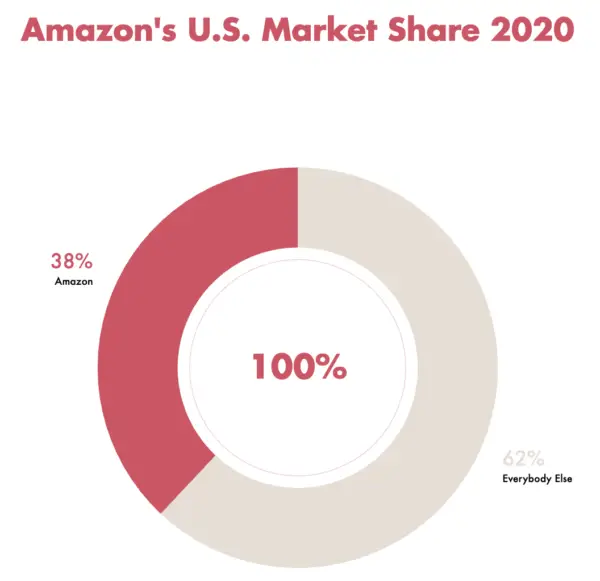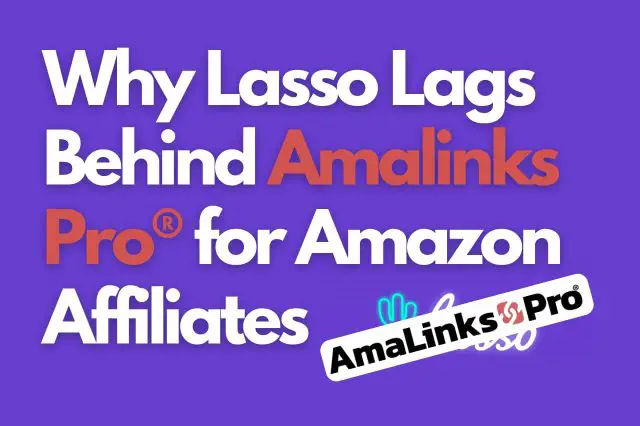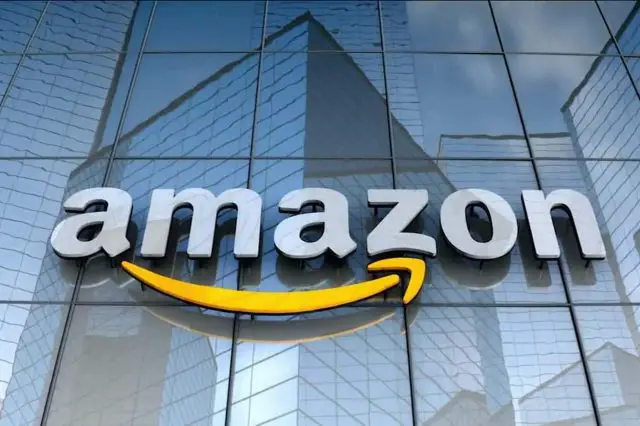When Amazon reduced the Amazon affiliate commission rate for many of its product categories back in April 2020, it generated a massive wave of hurt and anger. As the world reeled in shock at the global spread of Covid-19, bringing with it fear, sadness and massive uncertainty for both families and businesses, Amazon’s timing could not have been worse.
This lead to many affiliates declaring enough was enough and they looked to make the switch from Amazon to higher-paying affiliate programs.
As the dust continues to settle on those changes, and as affiliates adapt to the new landscape, we take a balanced look at the issue, to see if it really is profitable to switch from Amazon to higher-paying affiliate programs.
Why do Affiliate Programs Exist, and why do They Change?
Aside from the lousy timing, much of the hurt surrounding Amazon’s rate changes comes from the belief that Amazon is stabbing in the back those very people upon whose shoulders Amazon was built – affiliates. So before we dive into the nitty-gritty of the pros and cons of switching from Amazon to a higher-paying affiliate program, it’s worth taking a brief step back to consider the affiliate model as a whole. This will help to inform the direction we take when considering alternative affiliate programs.
For many companies the amount of money they have to pay in marketing and advertising to recruit a new customer is high. This figure is known as the Customer Acquisition Cost, and affiliates can decrease this number for those companies by effectively doing the marketing work for them in return for an affiliate commission. This is very often significantly cheaper for the company than recruiting new customers through their own marketing channels. Amazon was built in this way.
What’s the problem?
 The problem comes when those companies become so successful that they are the first port of call for customers anyway. If online shoppers are buying on Amazon, why should Amazon shell out on an affiliate program? Amazon currently dominates the online shopping market with a 38.0% share of all U.S. e-commerce sales, and that number continues to grow.
The problem comes when those companies become so successful that they are the first port of call for customers anyway. If online shoppers are buying on Amazon, why should Amazon shell out on an affiliate program? Amazon currently dominates the online shopping market with a 38.0% share of all U.S. e-commerce sales, and that number continues to grow.
Some believe that’s why Amazon reduced the commission rates in April 2020. Those categories hit hardest include groceries and home furniture – Amazon knew that the numbers of customers buying in these categories would increase during the pandemic, and thus knew they could increase their profits during this time by reducing the rates they pay out to affiliates. Greedy? Business savvy? You decide.
All Affiliate Programs Change The Commission Rates
At the end of the day, Amazon is a business. It’s been changing rates for years (data courtesy of geniuslinks) and it will continue to do so in the future. But it’s important to remember that Amazon is not alone in that. All businesses need to adapt and change to better reflect their own needs at the time. And you can bet your bottom dollar that all affiliate programs will change their rates at some point down the line.
As affiliates, this is the shifting landscape we operate in, and as in any other risk and reward arena, the rewards taste great but the risk can really hurt. However, the shifting sands of commission rates are something that we need to learn to both live with and adapt to. Knowing it can happen on any day and at any time, and planning for that event – rather than burying our heads in those shifting sands – will lead to much less stress and lots more sleep.
So, what can we do?
Regardless of Which Affiliate Program(s) You Choose to be With, be Sure to do These Things
Amazon isn’t the only affiliate program out there and we’ll take a look at some alternatives shortly, but whichever you choose, by tripling-down on the following things you can shield yourself as much as possible from any future rate decreases.
Build Relationships with Your Readers + Build an Email List
Firstly, get the foundations of your business as strong as they can be. The key to this is having relationships with your audience. Build trust and rapport and gain loyalty. The best way to do this is to continue creating great content.
On top of this, it’s hugely important that you build an email list. This not only gives you direct one-to-one contact with your audience, it also allows you to build a lifelong business asset that belongs to you. For a more detailed look at the importance of email lists, check out this fantastic guide.
Building rapport and relationships with your audience are also crucial for the simple reason that’s it’s far easier to convert an existing reader into a buyer than it is to find and convert a new reader. And if you haven’t already, optimizing the conversion rate of your existing readers is also hugely important.
Optimize your Conversion Rate
Conversion Rate Optimization (CRO) is crucial for all sites. Nailing this for your site is one of the most effective ways of increasing your income from the same amount of traffic. Making more money from each reader can not just help you to close the gap on lost earnings from Amazon’s rate change, it can help you surpass your previous earnings. For a really useful guide to CRO, check out this article.
It’s worth going through your site and checking each post to ensure it’s optimized as best it can be. AmaLinks Pro® has a fully customizable Showcase Boxes that allow you to create beautiful product boxes that fit seamlessly with your website. Adding these into relevant places in all of your posts can be a simple way to increase your click-through rate to Amazon. See examples of some of our Showcase Boxes here.
Diversify
It’s important to acknowledge that there is always going to be risk involved when building an affiliate site. As unlikely as it is, Amazon, as much as any other business, could turn round one day and cancel the whole program. But you have to ask yourself if the potential reward to be gained by making a successful affiliate site outweighs the risk. There’s risk in every area of investment – stocks, shares, even the safe harbour of savings rates.
Ask any investor what the golden rule of investing is and they’re most likely going to answer with diversification. And the same holds true for affiliates. Placing all of your eggs in one basket is going to make your business more susceptible to the winds of change when they come along.
But there are some things you can do to soften the impact.
Display Adverts
Alongside your existing affiliate links, if it suits your niche and your audience, consider adding display adverts to your site. Four of the most popular platforms include:
Pop-ups
An exit-intent popup can be the perfect nudge to steer visitors towards making a purchase related to the products on that page. As an example, let’s say I ran an affiliate site in the sportswear niche and had written an article talking about the best sunglasses for runners. I could create an exit-intent pop-up advert that targets readers who are exiting the article and points them directly to a sales page on another of my affiliate platforms – Wiggle for example.
OptinMonster have a great article on how to do this and their research states that it can boost affiliate sales by up to 30%!
What are the Alternatives to the Amazon Affiliate Program?
Taking the steps above will ensure that you maximize your earnings regardless of which affiliate programs you’re with. But if you’re just with Amazon and looking to diversify, what are the alternatives and will they increase your earnings? There are plenty of excellent blog posts that detail alternatives to the Amazon Affiliate program. Here is a post about 7 affiliate networks that payout daily. There are plenty more out there too – see here, here and here for just a few. But generally speaking, there are three avenues to explore.
Networks
Umbrella sites that house affiliate programs for lots of different merchants. Often, you’ll need to be approved by the network themselves as well as the individual merchants within that you wish to sign up with. Popular network sites include:
Back to our sportswear example. If I look at Awin’s advertiser directory I can see there are 62 potential merchants selling products in that niche, with everything from sunglasses to skis. Once Awin has approved my site, I can then go through those 62 to see which align best with my niche and my site. I’d pick the three I felt most likely to resonate with my readers and apply to be approved.
Large eCommerce sites
Large stores, often with high-street retail presence as well as huge e-commerce websites, these are effectively Amazon alternatives, but with a much smaller product range.
Direct merchants
Finally, there are direct merchants, those companies that offer their own affiliate program to bloggers and influencers in that niche. Continuing our sportswear example, if I type ‘sports affiliate programs’ into Google I can see that the helpful folk at Authority Hacker have made this post. Looking down that list I see three stores that I’ve bought directly from myself – Under Armour, Mountain Hardware and GoPro. They would be the three I’d look at first because I know and trust them, and therefore would recommend them to my audience. I’d then research the others to see if any would suit.
So, How do I Switch from Amazon to Higher-paying Affiliate Programs?
While the commission rates are undoubtedly attractive for some of those programs and merchants mentioned above, before you decide to apply to a new platform and swap all of your links out for the new program, you need to see which programs work for you. Higher paying affiliate programs mean nothing if they don’t convert well. It’s better to have a low commission on lots of transactions than a high commission on none.
The reason Amazon tends to convert so well is in part down to customer trust. If a new reader lands on your site for the first time and clicks through to an eStore from one of your links, they are likely to feel much more comfortable – and therefore more likely to buy – if they land in an environment that is familiar to them. Don’t be enticed by the higher commission rates without testing the conversion rate first.
Authority Hacker has created a step-by-step plan on how to find the best alternative program for your niche by using AHrefs to reverse engineer your competitor’s sites. Check out the video here (8:30 onwards).
Before you Switch from Amazon to Higher-paying Affiliate Programs, Test to see What Works Best for you
Once you’ve researched which networks and merchants may work best for your niche and then signed up to a few of them, it’s time to test. If you’ve been using exit-intent pop-up adverts for a while you may well have an inkling as to which e-commerce sites convert well for your site.
If not, or if you prefer to compare like-for-like, this is one method you could use.
- Take a selection of your most popular articles that already have your Amazon links in – let’s say a round-up post, a list post and a review post.
- Copy and paste the content for each of these into new draft posts and keep them as unpublished drafts so that you have your original Amazon-linked post backed up. Then, in your live post, swap the Amazon links out for links to the same products through one of your new chosen affiliate programs. You’ll then need to go through the post and make sure that you remove ALL data that is pulled from Amazon (images etc) and replace those with the versions from the new affiliate program. If you don’t do this you run the risk of being banned by Amazon – see below.
- Temporarily redirect your original URL to one of the new URL’s and let the new version run for a couple of weeks or until it’s built up a fair number of clicks and then compare your earnings per click between the two posts. (Likewise, you could use an A/B Testing plugin to redirect your visitors to different versions of your post)
Once you Have Your Results
Hopefully, your test will highlight a few programs that work well for your site and you can then start to diversify your affiliate income sources. Great! If the tests prove that Amazon doesn’t convert as well as those other programs, then you could take the plunge and switch from Amazon to those higher-paying affiliate programs. Or, if you find that the conversion rate for Amazon is still the best but a few of the other programs showed promise, then it makes sense – for your profits – to stay with Amazon while adding the new programs into your workflow.
Having said that, given that most of the programs only pay out once a certain amount is earned, signing up to too many could mean you spread your traffic too thinly, meaning you’ll have to wait a long time to be paid. It’s a balance.
A word of warning though…
Can I link to more than one eStore in the same post?
You’d be forgiven for thinking that the easiest solution here is to have links for lots of different eStores all within one post. If you run a book blog, why not link Amazon, Barnes and Noble and Books-a-Million for each book you write about? Sadly, it’s not that simple. If you’re using any of Amazon’s ‘Program Content’, the rules specify that:
You will not display on your Site, or otherwise use, any Program Content to advertise or promote any products that are offered on any site that is not an Amazon Site (e.g., products offered by other retailers).
So, if you’re going to run more than one affiliate program, you’ll need to create different posts with different images etc. For more detail on this, check out Matt’s in-depth article on this here.
Which Affiliate Program is Best for Beginners?
If you’re just starting out as an affiliate marketer and don’t have a huge amount of traffic or lots of popular posts to test different programs on, then the simplest solution is to start with Amazon. Once you have some good traffic coming in and are then able to test some of your posts, you can use the methods above to see if other affiliate programs may work well for you and your site. You can then switch from Amazon to higher-paying affiliate programs, or keep Amazon and add the best performers into your plans.
But without a benchmark to test against, testing is pointless. You need to start somewhere and due to the sheer number of customers searching on Amazon every single day, it’s the most plausible place to start.
In addition, the sign-up process is super simple and approval generally easy. Check out Amazon’s approval criteria here and clicking on the Participation Requirements link.
Once you’ve cut your teeth with Amazon’s program and have a better empathy with your audience and their needs, you’ll have a better understanding of your best path to diversification.
Things to Look out for When Thinking of Diversifying…
So, let’s say you’ve tested some other affiliate programs out and found that some of them perform way better than Amazon – awesome! Before you ditch Amazon completely though, here are a few things that you should look out for…
Cookies
Amazon’s cookie duration lasts for 24 hours. Once a reader clicks through to Amazon from your site the timer starts and after 24 hours that cookie ends, and, if the reader hasn’t bought anything during that time, then your hopes of a commission end with it.
Many of the other affiliate programs have a much longer cookie window, often 30 or 60 days, sometimes even longer. Which is obviously much better than Amazon’s 24-hour window. However, a crucial thing you need to check is whether the commission is just on the product you’re recommending, or the whole shopping cart?
In a recent YouTube video, (38:06 onwards) Miles Beckler gave the following earning example. In a given month his affiliate links generated 270 sales on Amazon. But, he sold 1500 individual products. So, thanks to the fact he gets a commission on the whole cart, not just the item he referred, Amazon gave Miles a commission on an extra 1230 products. That’s 4.5 times larger than the sales number and a significant amount of extra revenue for him.
Not all affiliate programs offer the same benefit – and let’s face it, it’s a big benefit! So it’s worth checking that carefully if you’re thinking of switching completely from Amazon.
Fees
Some programs charge a joining fee. Although this is often refundable once an affiliate earns a certain amount, it’s worth being aware of.
Payments
Programs do vary in terms of how long they take to pay you. Most programs send payments to you on a monthly basis, as long as you’ve earned any minimum amount for that particular program. Some programs take a much longer time to pay up though. For example, Dreamhost pays out after 97 days.
So, Should I Switch from Amazon to Higher-paying Affiliate Programs…?
Despite the reduced commission rates, Amazon is still a great choice for many affiliates. People are buying on Amazon anyway. As already mentioned, 38% of e-commerce trade floods through Amazon’s checkouts and with the numbers of Prime members rising, online shoppers are increasingly turning to the world’s largest e-commerce retailer for their purchases. With around 8 billion searches per day, Amazon’s numbers really do speak for themselves.
The world is definitely a different place to what it was 12 months ago, but certain things and certain habits haven’t changed. Time is still everyone’s greatest commodity. Dinner still needs to be made, the kids are still (possibly even more!) demanding of your attention and the dog still wants to go for walkies. In short, we’re still busy people with a tonne of stuff going on every day.
And so when it comes to online shopping people are still looking for the most convenient way of doing it. If that means they can get everything from one online retailer, delivered in one package and without having to set up a stack of new online accounts, the chances are that’s what they’re gonna do.
The Key is to Remove Feeling from your Decision + Follow Your Numbers
As a business owner, whether you personally love or hate Amazon goes out of the window when making your decision of whether to switch from Amazon to higher-paying affiliate programs. The key thing you need to know is where your readers feel more comfortable buying. If your testing proves that they will use Amazon (because they trust Amazon, because they’re a Prime member already and because it’s cheaper), then love ‘em or hate ‘em, you need to follow the numbers and direct your audience to Amazon.
If however, your tests prove something different, then you should add those programs into your income streams alongside Amazon being extremely careful not to break Amazon’s compliance rules. Or, if they outperform Amazon completely, ditch Amazon and switch to those higher-paying affiliate programs. Follow your numbers.
Whatever you decide to do, we wish you every success.
If you are looking for some other affiliate programs other than the Amazon Associates program, check out our database of affiliate marketing programs.




